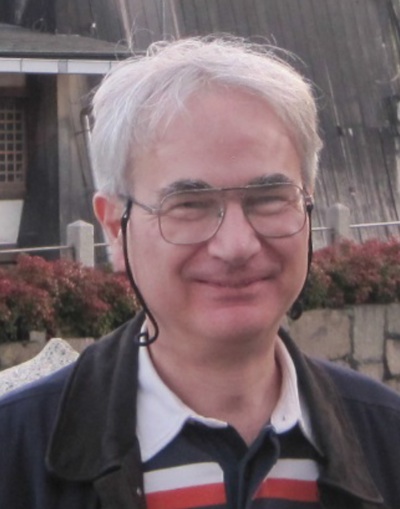Cambridge 7th to 9th September

Presenting Author:
Safa Kasap
<safa.kasap@usask.ca>
article posted 30 Apr 2015
Safa Kasap
Safa Kasap is currently Canada Research Chair (Tier 1) and Professor of Electronic and Optoelectronic Materials and Devices at the University of Saskatchewan in Canada. He works closely with scientists at the Canadian Light Source (The Canadian Synchrotron) on campus, and with industry, for the development of new functionalities in glasses for applications in radiation detection and medical imaging. He has two widely used textbooks: Principles of Electronic Materials and Devices, 3rd Ed (McGraw-Hill) and Optoelectronics and Photonics, 2nd Ed (Prentice-Hall: Pearson). He is the Deputy Editor of J. Materials Science: Materials in Electronics (Springer) and a Co-Editor of the Springer Handbook of Electronic and Photonic Materials. Professor Kasap is Fellow of the Royal Society of Canada, the American Physical Society and SGT in the UK.

Development of Sm-Doped Glass-Ceramics for High-Dose,
High-Resolution Dosimetry in Microbeam Radiation Therapy
at the Canadian Light Source
Safa Kasap1*, Go Okada2, Jumpei Ueda3, Setsuhisa Tanabe3, George Belev4, Tomasz Wysokinski4 and Dean Chapman4,5
There is a need to develop high-dose, high-resolution dosimetric detectors to characterize the microstructured x-ray beams used in microbeam radiation therapy (MRT). In this paper, we report a technique that is based on the reduction of Sm3+ to Sm2+ within CaF2 nanocrystals embedded in an oxyfluoride glass-ceramic (SiO2-Al2O3-CaF2-CaO-SmF3) plate [1]. We use the extent of Sm3+ --> Sm2+ valence reduction caused by x-ray irradiation as a probe of the x-ray dose delivered.
 A confocal fluorescence microscope is used to read out the distribution of reduced
Sm2+-ions by their characteristic photoluminescence (PL) emission.
The PL emission from Sm3+ and Sm2+
ions have distinctly different
PL characteristics and can be distinguished. The technique is similar to that reported
for Sm-doped fluorophosphate and fluoroaluminate glasses for MRT where the x-ray
induced Sm3+ --> Sm2+
valence reduction occurred within the glass matrix [2].
A confocal fluorescence microscope is used to read out the distribution of reduced
Sm2+-ions by their characteristic photoluminescence (PL) emission.
The PL emission from Sm3+ and Sm2+
ions have distinctly different
PL characteristics and can be distinguished. The technique is similar to that reported
for Sm-doped fluorophosphate and fluoroaluminate glasses for MRT where the x-ray
induced Sm3+ --> Sm2+
valence reduction occurred within the glass matrix [2].
We demonstrate that the Sm3+ --> Sm2+ valence reduction takes place in CaF2 nanocrystals, and not in the glass matrix. The PL emission from the Sm2+-ion is mainly due to the fast 4f55d1 --> 7F0 transition (in contrast to the f-f transitions in Sm2+ in a glass host), which allows us to read out the
 irradiated dosimetric plate
at a high scanning speed in confocal fluorescence microscopy. In addition, we show
that the dose range that can be detected is several thousands of gray, and x-ray dose
distribution is detected at a micrometer scale. Further, the x-ray induced
Sm2+ signal
can be erased by heating the irradiated sample at a suitable high temperature; or by
exposing it to UV light. The erased glass-ceramic plate can be used again with very
little variation in its response characteristics as a dosimetric detector. The new
Sm-doped oxyfluoride glass ceramic containing dispersed
CaF2:Sm3+ nanocrystals
reported in this work shows potential for practical use in high-dose, high-resolution
dosimetry for MRT.
irradiated dosimetric plate
at a high scanning speed in confocal fluorescence microscopy. In addition, we show
that the dose range that can be detected is several thousands of gray, and x-ray dose
distribution is detected at a micrometer scale. Further, the x-ray induced
Sm2+ signal
can be erased by heating the irradiated sample at a suitable high temperature; or by
exposing it to UV light. The erased glass-ceramic plate can be used again with very
little variation in its response characteristics as a dosimetric detector. The new
Sm-doped oxyfluoride glass ceramic containing dispersed
CaF2:Sm3+ nanocrystals
reported in this work shows potential for practical use in high-dose, high-resolution
dosimetry for MRT.
References:
1. G. Okada, J. Ueda, S. Tanabe, G. Belev, T. Wysokinski, D. Chapman, D. Tonchev, and S. Kasap, J. Am. Ceram. Soc., 97, 2147 (2014)
2. Go Okada, B. Morrell, C. Koughia, A. Edgar, C. Varoy, G. Belev, T. Wysokinski, D. Chapman and S. Kasap, Appl. Phys. Lett., 99, 121105 (2011)
Institutions:
1Electrical Engineering, University of Saskatchewan, Saskatoon, Canada
2Materials Science, Nara Institute of Technology, Nara, Japan
3Graduate School of Global Environmental Studies, Kyoto University, Japan
4Canadian Light Source Inc., Saskatoon, SK, Canada
5Anatomy and Cell Biology, University of Saskatchewan, Saskatoon, Canada
